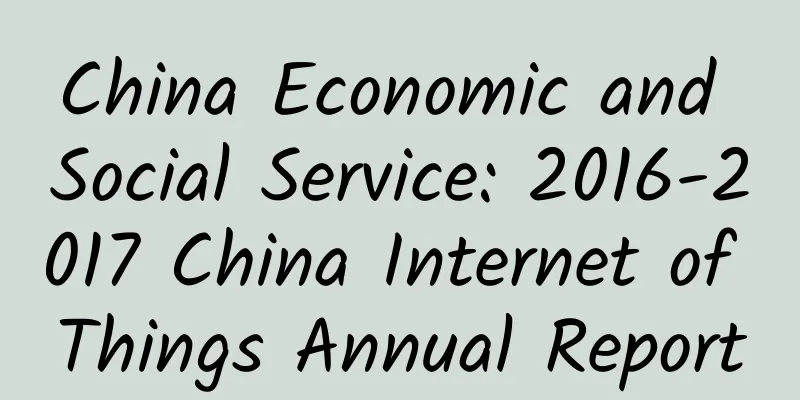The pace of new energy vehicle popularization is accelerating. How can power batteries help?

|
According to the plan, Japan will increase the proportion of new energy vehicle sales to 50% of total sales in 2020, and to 70% in 2030; the United States will have 1 million electric vehicles in 2020, and China's new energy vehicle sales will account for 20% or even higher of total sales by 2025... Various signs indicate that the direction of developing new energy vehicles has been clarified, and the pace of popularization is accelerating. There is no doubt that the popularization of new energy vehicles requires the efforts of the entire industry chain, especially continuous breakthroughs in the field of power batteries, which are its "heart". It can be seen that in recent years, along with the rapid growth of new energy vehicles, power batteries have become a field with extremely high investment enthusiasm. According to incomplete statistics from a third-party data platform, in the past year and a half, there have been 66 lithium battery investment projects alone. Even if the seven companies that did not disclose their investment amounts are excluded, the total investment has exceeded 143.3 billion yuan. In addition, the number of domestic power battery companies has also increased rapidly from about 50 at the end of 2014 to 150 in 2016. In the past two years, these battery companies have invested in building factories, or sought cooperation with vehicle manufacturers, or widely spread various technical routes, etc., in order to seize the opportunity before the new energy vehicle market ushered in an explosion and make a big move in this field. In fact, driven by these companies, the power battery field has indeed achieved certain results in the past two years. Qu Guochun, deputy director of the Equipment Industry Department of the Ministry of Industry and Information Technology, revealed: By the end of 2016, the energy density of my country's power battery cells had reached 220 watt-hours/kilogram, and the price was as low as 1.5 yuan/watt-hour. Compared with 2002, the energy density increased by 1.7 times and the price dropped by 60%. Four major battery industry clusters have been built in the Pearl River Delta, Yangtze River Delta, Beijing-Tianjin-Hebei, and Central Plains. China has become the world's largest power battery producer. The localization level of equipment of many battery companies exceeds 70%, and some have reached more than 90%. It seems that the field of power batteries has indeed made gratifying progress. However, if we consider the popularization of new energy vehicles, the current level is obviously not enough. From the speech of Deputy Director Qu Guochun, we can see that in terms of power batteries, in addition to safety performance, which must be taken into consideration as a basis, there are two other evaluation criteria: cost and energy density. It can be said that if these two issues are not handled well, new energy vehicles will be difficult to popularize. First, let’s look at the cost, or more accurately, the price/performance ratio. At the end of last year, the Ministry of Industry and Information Technology and four other ministries issued the "Notice on Adjusting the Financial Subsidy Policy for the Promotion and Application of New Energy Vehicles", which clearly stated that subsidies for new energy vehicles will decline by 20% each year until they are completely stopped in 2020. Since power batteries account for about 30% to 40% of the manufacturing cost of new energy vehicles, in order to make new energy vehicles more price-competitive and form sufficient market competitiveness, it is necessary to reduce the cost of power batteries and improve the cost-effectiveness. As Qu Guochun said, the price of power batteries is decreasing year by year, but what level should be reached to be able to compete with traditional fuel vehicles? Ouyang Minggao, executive vice president of the China Electric Vehicle 100 Association, said that according to the calculation method of the equivalent of the internal combustion engine power system and the new battery power system, the battery cost needs to reach about $100/kWh to be competitive, without government financial subsidies, and to achieve full marketization. Feng Xiao, general manager of Phylion Power Co., Ltd., also said in an interview recently that both power battery companies and car companies must consider in advance how to gain a foothold in the market after the subsidy is gone, and improving the overall cost performance is an unavoidable issue. According to the company's plan, with its existing technical level, after steady development, it has been able to ensure that the price of power battery packs will be reduced to 1 yuan/Wh in 2020. Next, it will continue to increase technology research and development and optimize the production and manufacturing system, with the goal of reducing the corresponding cost to 0.8 yuan/Wh, or even 0.6 yuan/Wh in 2020. It is worth noting that although the industry has mostly focused on the selection of raw materials in terms of cost reduction, it is undeniable that improving the overall cost performance of batteries actually depends on supply chain construction, production model optimization, process route selection, equipment selection, plant layout and site utilization, etc. Battery companies need to comprehensively consider the entire production and manufacturing process. From this perspective, power battery companies still have a lot of room for improvement. Now let's talk about specific energy. To some extent, we can call it range. If there is still a bottleneck restricting the development of new energy vehicles, cruising range must be one of them. At present, most car companies have stated that they will achieve a breakthrough in range around 2020. Tesla Motors CEO Elon Musk has also publicly stated that car mileage can be improved by about 5% to 10% each year, which means that in theory, Tesla's maximum range in 2020 will reach 750 miles (1,207 kilometers). Of course, if the level of the entire industry can be on par with Tesla's expectations by 2020, it will indeed be extremely beneficial to the popularization of new energy vehicles, but obviously, the industry still has doubts about this and obviously does not agree to put all eggs in this basket. In other words, for the popularization of new energy vehicles, the improvement of power battery range is very important, but it is not the only focus. It is also related to many factors such as policy support and charging infrastructure construction. Taking charging piles as an example, the "Guidelines for the Development of Electric Vehicle Charging Infrastructure (2015-2020)" proposes that priority should be given to the construction of charging infrastructure in public service areas such as public transportation, taxis, sanitation and logistics, and by 2020, more than 4.3 million user-specific charging piles and 500,000 decentralized public charging piles will be added. As of the end of 2016, the number of public charging piles built in my country was 141,000. Judging from the current completion situation, there is still a long way to go to reach the goal. There is no doubt that when the charging pile network is further optimized and the number of charging piles continues to increase, users' range anxiety can be alleviated to a certain extent. In this regard, Feng Xiao even put forward a bold assumption: "Assuming that the number of charging facilities in the future increases to hundreds or even thousands of times the current number of gas stations, the range of electric vehicles may only need 200 kilometers." It has to be said that this is not impossible. Back to the level of power battery companies, when the requirements for cost-effectiveness, driving range, or charging infrastructure become increasingly stringent, it is believed that "some are happy and some are worried." According to the reporter, among the more than 100 newly added enterprises in the past two years, there are good and bad ones. Among them, it is possible that some enterprises are purely relying on policies and capital, but do not have sufficient experience accumulation and solid foundation. When policy supervision becomes stricter and the market returns to rationality, they will have to withdraw from the market, and the ones that will really stay are those enterprises with solid basic skills. If the solidity of basic skills determines whether a company can stay in the field of power batteries, then the strategic layout determines how far it can go. Feng Xiao said that under normal circumstances, the layout of an enterprise can be simply summarized as: eating what is in the bowl, cooking what is in the pot, and watching what is in the field. Enterprises should first think carefully about what is in the bowl, what is in the pot, and what is in the field. For Xingheng, the so-called "in the bowl" refers to the field of logistics vehicles, and this market must be "fully understood". And "in the pot" refers to the field of passenger vehicles. In May of this year, Xingheng Power's super lithium manganese oxide passenger vehicles were launched in batches and officially tested in the new market. As for "in the field", it is actually future demand and market trends, and enterprises must have insight into this in advance. In short, the popularization of new energy vehicles requires the coordinated promotion of all parties, especially power battery companies, which need to change from fighting alone to working together for win-win results, and jointly make the "big cake" of the new energy vehicle market bigger. Only in this way can they get a bigger share of the pie. As a winner of Toutiao's Qingyun Plan and Baijiahao's Bai+ Plan, the 2019 Baidu Digital Author of the Year, the Baijiahao's Most Popular Author in the Technology Field, the 2019 Sogou Technology and Culture Author, and the 2021 Baijiahao Quarterly Influential Creator, he has won many awards, including the 2013 Sohu Best Industry Media Person, the 2015 China New Media Entrepreneurship Competition Beijing Third Place, the 2015 Guangmang Experience Award, the 2015 China New Media Entrepreneurship Competition Finals Third Place, and the 2018 Baidu Dynamic Annual Powerful Celebrity. |
>>: Daimler summoned by German Transport Ministry for selling vehicles with excessive emissions
Recommend
A brief analysis of the successful cases of leveraging marketing on New Year’s Eve!
New Year's Day is the beginning of the new ye...
It turns out that animals also like to dip dumplings in vinegar? Why?
You have to dip dumplings in vinegar when eating ...
Bilibili is going public in the United States. Let’s talk about the “three-step” strategy for advertising on Bilibili!
Most marketers who are eager for a young user bas...
With the trend of social e-commerce, has KOL marketing become a new traffic entry point?
Why do Chinese companies choose KOLs as their fir...
BlackBerry launches classic model again
"If you don't do it, you won't die&q...
Meizu S6 review: Is the side fingerprint a genius idea for a full-screen phone?
Meizu S6, the first full-screen mobile phone of t...
FAW Audi dealers: Stop picking up imported and domestically produced cars in December
This winter is particularly cold for Audi and FAW...
The Force Blog: Passive Explosion of Followers on Public Accounts
Resource introduction of "Passive Explosion o...
Is it technically possible to bring everyone in the country into one WeChat group?
According to WeChat public data, in September 201...
Will milk tea be classified into nutritional levels? Which level of milk tea is healthy?
According to recent media reports, Shanghai has p...
It's already the coldest time of the year, why aren't all the major ice rinks in Beijing open yet? Is this really a "warm winter"?
Review expert: Ye Haiying, deputy director of the...
Event Promotion: How to create a hit event?
This chapter will take the recent mini program fi...
Dragon Head Secret Agent White Horse Secret Agent Zhong Zhan 27th Quantitative Science Dragon Catching Special Forces
Dragon Head Spy White Horse Spy Zhong Zhan 27th Q...
Will the 2020 highways be free during the Dragon Boat Festival holiday? There are three days of Dragon Boat Festival holiday. Will the highways still be free?
Will the 2020 highways be free during the Dragon ...
O2O transforms traditional service industry in many ways, taking hairdressing as an example
The hairdressing industry is a basic need for mos...









